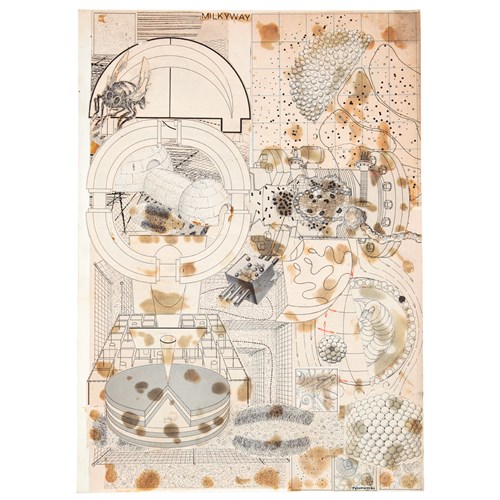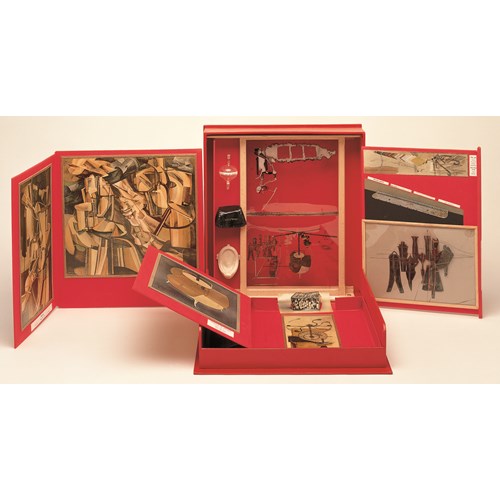Marketplace
Two Ecstatics in an Apocalyptic Landscape
Ludwig Meidner
Two Ecstatics in an Apocalyptic Landscape
Date 1921
Period 20th century
Origin Germany
Medium Black chalk on paper
Dimension 66 x 51 cm (26 x 20¹/₈ inches)
Monogram and dated LM 1921 and with text Für W.K
The work of Ludwig Meidner stands under the sign of the Apocalypse. In the background plays his Jewish origins and his interest in Christendom. More important still is his critical stance against war and total alienation, seen by him as modern capitalism’s principal products. From 1911 Meidner is part of the Berlin avant-garde, and actively involved with literary and artistic expressionism. With like-minded artists, in 1912 he founds the group Die Pathetiker, refering to the vitalist notion of ‘pathos’ as developed by Nietzsche in his writings. He makes fierce portraits and many landscapes – urban or rural, usually during or after a large-scale catastrophy. He paints social crises and conflicts like volcanic eruptions, in an expressionist visual language that is influenced by futurism and contains echoes of the baroque. After the November 1918 Revolution he enlists in the artists-groups Arbeitsrat für Kunst and the Novembergruppe. It seems not too far-fetched to see a memory of the revolution’s defeat in this picture of calamity, as well as a foreboding of the Fascist nightmare to come. Even with the courage of despair, the figures can no longer escape the menace encroaching from all sides.
The work of Ludwig Meidner stands under the sign of the Apocalypse. In the background plays his Jewish origins and his interest in Christendom. More important still is his critical stance against war and total alienation, seen by him as modern capitalism’s principal products. From 1911 Meidner is part of the Berlin avant-garde, and actively involved with literary and artistic expressionism. With like-minded artists, in 1912 he founds the group Die Pathetiker, refering to the vitalist notion of ‘pathos’ as developed by Nietzsche in his writings. He makes fierce portraits and many landscapes – urban or rural, usually during or after a large-scale catastrophy. He paints social crises and conflicts like volcanic eruptions, in an expressionist visual language that is influenced by futurism and contains echoes of the baroque. After the November 1918 Revolution he enlists in the artists-groups Arbeitsrat für Kunst and the Novembergruppe. It seems not too far-fetched to see a memory of the revolution’s defeat in this picture of calamity, as well as a foreboding of the Fascist nightmare to come. Even with the courage of despair, the figures can no longer escape the menace encroaching from all sides.
Date: 1921
Period: 20th century
Origin: Germany
Medium: Black chalk on paper
Signature: Signed with the artist’s monogram and dated ‘LM 1921’, and inscribed Für W.K. (to the piano player Walter Kämpfer).
Dimension: 66 x 51 cm (26 x 20¹/₈ inches)
Provenance: Galerie Elke und Werner Zimmer, Düsseldorf
Private collection, Hessen
More artworks from the Gallery





, Verso Recto (State II),1998_T638502436842816694.png?width=500&height=500&mode=pad&scale=both&qlt=90&format=jpg)
, 1899_T638501861253708741.jpg?width=500&height=500&mode=pad&scale=both&qlt=90&format=jpg)


